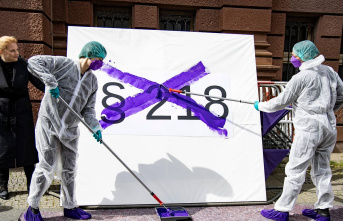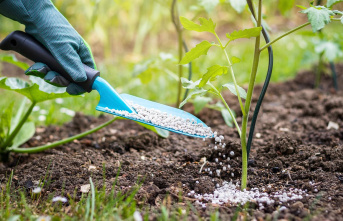in the middle of this year that is now ending, the designer Carolina Herrera presented a collection of gowns inspired by the textile designs of the indigenous mexicans, who were kidnapped and showed a public outrage, like everything today, went around the world in a few hours. “What indian is fashionable, the good wild is nice”, he says sarcastically at the artist Dario Canul, zapotec, on the part of mother and maya via the paternal line. And does not go off. Without being able to clarify the origin of such a phenomenon, no doubt has been influenced by factors such as the globalised tourism; a western world spent looking for new values in those stocks that embody; the return to nature as well as combat climate change; or perhaps a gesture of defiance towards equality that has already started the zapatista movement in 1994. To this revival of the original, has been added to force the current president of Mexico, Andrés Manuel López Obrador, who presents his mandate with the aspiration of historical change and capped off his inauguration with a ceremony pre-hispanic in the indigenous heart of Mexico. It is not strange that now we touch the art, with its vocation of intervention in the public space and the political, bringing to the present the plastic of the indigenous peoples.
The mexican company is also advancing in the road already travelled through other countries, such as Australia and Canada in the nineties, to bring to light the art of their peoples, and of comparing it with the western canon prevailing. “In Mexico, there was some rapprochement in the years 50, with Frida Kahlo and Diego Rivera, but very measured, with no artistic evolution. Mexico still has not been incorporated into a complex narrative that will allow the entry of certain indigenous practices to the corpus of art. Australia has large collections and in Canada there is a whole rhetoric of contemporary art, indigenous,” says Helena Chávez, the Institute of Aesthetic Research of the UNAM.
The Avant-garde also returned the gaze to the oldest to make it modern, but it was always a look apropiacionista. Now, however, there is a new generation of artists maya, zapotec, tsotsiles, lacandones, or of any other population who feel themselves artists, who have gone through art schools, some, that reinterpret the symbols, which are involved politically with their works, that they have no more vocation to the beauty, or looking for the genius. And here opens a new front with the understanding of the art of the native peoples, demanding that a practice, community, shared, away from the western canon: the genius of an author unique.
Dario Canul is the founder with Cosijosea Sernas of the collective Tlacolulokos, an artistic project “anti-capitalist, punk and antifascist” which claims a relationship with art that has nothing to do with the current markets. They live in Tlacolula de Matamoros, of 30,000 inhabitants, a small town surrounded by aboriginal communities. Canul rejects the only idea of going down to the State capital, Oaxaca, because it prefers the contact with the village people. However, they have traveled with their groundbreaking murals to Lille (France), where they sowed the controversy, or to The Angels. That sounds very modern: “Yes, it is a very thin line,” acknowledges Canul. Formally, his art is as current as what is expressed.
Canul does not reserve criticism only for the capitalism. Accuses coldly to some of the indigenous people to worship the tourism as the golden calf, to “sell the indigenous universe of hypocritical way”. “They, themselves, exotizan on occasion, put on their sandals and your shawl when you have never used."
Ana Hernandez with his reinterpretation of jicara. EVA LEPIZThe artist Ana Hernandez defends seamless practices of indigenous communities, their way of approaching the art, collective, shared. She is “zapotec of the isthmus of Tehuantepec”. The word indigenous will “makes noise” and the same if you are asked about the division between art and craft: you don't see a border, but she is the example of that exists. Hernandez works the textile and reinterprets it as an artist, everyday objects. But what makes, defends, as it works in those villages, “looking for the opinion and the intervention of his mother, his mother-in-law, her cousins, the neighbors”, even though they are six hours away from her, because she lives in Oaxaca. “My job part of my family and of the traditional techniques of my people.”
No folklore
Tlacolulokos and Hernandez participated in the collective exhibition in The Gaps of the Water, in the mexican museum of Poplar, which was inaugurated in may. The curator was Itzel Vargas Plata, who took care of a lot of talk about contemporary art, a western concept that was changed by the current art of the aboriginal peoples (the name indigenous not she likes him for his politics, for being the description that is used abroad to refer to the aboriginal peoples, who are not named that way). Also wanted to avoid the age-old debate between art and craft and simply asked for “the works of people that assume as an artist”. She chose "those from which one can rethink the work of the artist in interaction with this complex, without idealizing or folclorizar”. The final selection spoke of drugs, traffic of weapons, lingüicidio, lost items, and the heterogeneity was absolute.
This exhibition showed the art of native origins that was not in the past, but that has evolved with the times. Or is it just an incorporation spurious the western canon? Are, says Dario Canul, lines are very thin. The way to go, says Vargas, it must be a “constant research on these artists and to include them in collections with all the others, because they can have a dialogue with them.”
on December 7, was opened in the mexican capital that the exposure of Abuses of the forms, in the Carrillo Gil Museum, whose curator is Mauricio Marcín. “I was trying to expose an art that seeks the unprecedented, new sources where drinking and, as they did in the Avant-garde, he sometimes finds the new in the old. It is one thing to appropriate it and another to treat it in a critical way, without profit extraction”. Marcín is pointing to another of the angles of this debate, which harks back to the fashion collection from Carolina Herrera or any other that “sold” at a better price and without accountability the work of indigenous artisans for centuries.
Crafts revived
Does the craft not can be reinterpreted from an artistic point of view? It is not always easy, because some artists do not see the dividing line any, and resent the mention of two different worlds. For Mauritius Marcín, both concepts have to do with a notion of colonial, that is to say, imposed. He knows that the debate is not only of Mexico, that in all the world the craftsmanship coexists with the art and shows differences that he himself explains detalladamente. “The craft was originally created to have a use: function and beauty were not dissociated. The art is born to be beautiful, in any case its function, its use, could be the production of knowledge symbolic”. Later, he adds, everything was complicated and some of these objects craft leapt into the museum and placed in display cases.
“I believe that it is necessary to privilege the good work and not to grab everything and put it in a display case. Sometimes, because of that notion of what inclusive, include the marginalized, it is not looking good, but to fill the display case of things”, says Dario Canul.
could it be this that is making the current mexican government? Fill the display cases, break the lines between art and craft. If so, you might wonder if that is good or bad, given the diversity of opinions on the subject. “I think that still governs the high culture versus popular culture, there is that put in question the narrative, which is also in Mexico continues to be western, with all the european influences and american. We should rethink a notion of a broader culture,” says Helena Chavez. The mexican artist Eduardo Abaroa, adds: “we are Not against the way cultural, of the becoming cultural of the aboriginal peoples, nor of the contamination of cultural, but of the violence manifested in the push”, extractivism.
Although, sometimes, that push receives the own indigenous artist of his countrymen, because out of the communitarianism and develops as a modern artist: that is to say, unique. Dario Canul agrees. Tlakolulokos has suffered in meats own, though, in your case, by putting in question the religion, the symbols, certain rituals of the native peoples. Canul continues handing out blame: “Now everything indian is trendy and in the spotlight, but it is not so nice to live in a community, it's not worth to go for a while and do a few silly cartoons. There are also a lot of machismo and a lot of discrimination... And the artists we have a responsibility as creators”.
tear Down the Museum of Anthropology
The National Museum of Anthropology is one of the most important of Mexico and of all America: preserved the great treasures of the mesoamerican peoples. But some propose to tear it down with everything inside it. In reality, it is just a “thought exercise” artist Eduardo Abaroa against the neglect to which it has been subjected to the native peoples, the domination of hegemonic, extractivism symbolic. The majority of the indigenous people passed that museum, is not the representation of those cultures but that the State makes of them,” he says.
But the mere idea of breaking down the imposing archaeological impresses him the artist of the zapotec Ana Hernandez. “Every time I visit I see things and I'm back to where I come from,” he says. There are bridges that almost no one is willing to blow up. Maruch Sántiz, famous photographer, native of San Juan Chamula (Chiapas), is the one more willing you are to tenderlos: “I Had teachers who were not indigenous, and I cannot forget them. I like to live in two or three worlds, I do not see evil any of them.”
Date Of Update: 28 December 2019, 19:00










